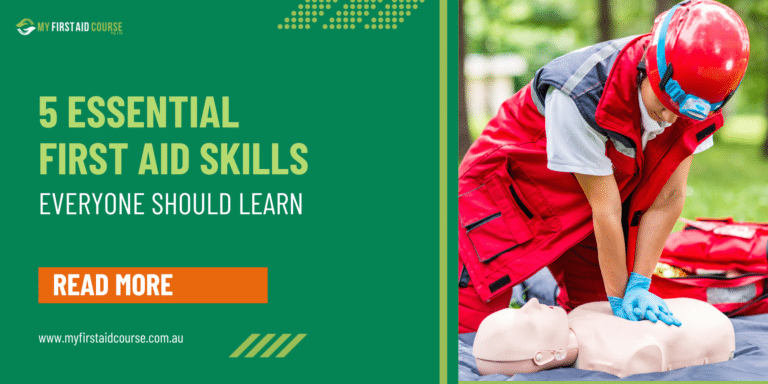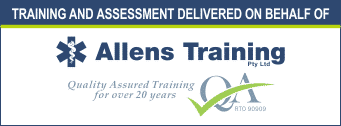Have you ever had one of those moments where you’re just going about your day, and suddenly, ouch! You’ve got a cut or a scrape. Maybe you were slicing veggies for dinner, gardening, or your little one took a tumble. We’ve all been there. Knowing how to handle these minor injuries can make a big difference, and that’s where first aid comes in handy. Whether it’s a tiny nick or a more serious gash, let’s walk through first aid for cuts and wounds. My First Aid Course in Brisbane has the perfect course recommendation for you: HLTAID011 Provide First Aid. It’s the ideal course to help you be prepared!
Types of Cuts and Wounds
First things first, let’s talk about what we’re dealing with. Cuts and wounds come in various shapes and sizes:
- Minor cuts: These are small and shallow, like paper cuts (ouch).
- Scrapes and abrasions: Often caused by friction, like falling off your bike and scraping your knee.
- Lacerations: Deeper cuts that might have jagged edges. Often resulting from contact with a sharp object, such as knives or broken glass.
- Puncture wounds: Caused by something sharp and pointed, like stepping on a nail.
These can happen during everyday activities, from cooking and gardening to sports and playtime with kids.
Immediate First Aid for Cuts and Wounds
When you or someone around you gets a cut or wound, it’s important to act quickly but calmly. Here’s what to do:

- Stop the Bleeding: This is your top priority.
- Apply Pressure: Use a clean cloth or bandage to press down on the wound. This helps to slow and eventually stop the bleeding.
- Apply Pressure: Use a clean cloth or bandage to press down on the wound. This helps to slow and eventually stop the bleeding.
- Clean the Wound: Once the bleeding is under control, clean the wound to prevent infection.
- Use water and mild soap or normal saline to gently rinse the area.
- Avoid using harsh chemicals like hydrogen peroxide directly on the wound.
- Protect the Wound: Keep it covered to protect it from dirt and bacteria.
- Apply a sterile bandage or dressing.
- Change the dressing daily or whenever it gets dirty or wet.
- Seek Help if Necessary: If the wound is deep or won’t stop bleeding, it’s time to see a professional.
Let’s Dig Deeper
What’s the next steps when giving first aid for cuts and wounds
Stopping the Bleeding
- Apply Pressure: Firmly press a clean cloth, bandage, or gauze pad on the wound. Hold it in place until the bleeding stops. This could take several minutes, so be patient.
Cleaning the Wound
- Rinse with Normal Saline: Use sterile normal saline, or cool, running water and mild soap to clean the wound. This helps to remove dirt and debris. You can use mild soap around the area but not directly in the wound.
- Pat Dry: Gently pat the area dry with a clean towel.
Protecting the Wound
- Apply Antibiotic Ointment: If you have it, use a thin layer of antibiotic ointment to help keep the wound moist and reduce the risk of infection.
- Cover with a Bandage: Use a sterile bandage or dressing to cover the wound. Make sure it’s not too tight, as you don’t want to cut off circulation.

Preventing Infection
Keeping the wound clean is crucial to prevent infection. Here’s what to watch for and how to care for the wound daily:
- Signs of Infection: Redness, swelling, warmth, pus, or increasing pain are signs that the wound might be infected. If you notice any of these, seek medical help.
- Daily Care: Change the dressing at least once a day or whenever it becomes dirty or wet. Clean the wound again each time you change the dressing.
- Antibiotic Ointments: Applying antibiotic ointment can help prevent infection. Use it as directed on the packaging.
Healing and Aftercare
There’s more than just first aid for cuts, proper aftercare will help ensure the wound heals well.
- Monitor the Healing: Keep an eye on the wound and watch for signs of infection. It should gradually improve.
- Change Dressings Regularly: Fresh dressings help keep the wound clean. Change them daily or as needed.
- Minimise Scarring: To reduce scarring, avoid picking at scabs and consider using products like silicone gel sheets or scar creams once the wound has healed.
Special Considerations

- For Children: Kids often get minor cuts and scrapes. Keep the first aid process simple and comforting. Use fun adhesive bandages with their favourite characters to make it less scary.
- For the Elderly: Older adults may have thinner skin and slower healing. They may also be taking blood thinners, so controlling bleeding may take a little more time (and patience). Be gentle and ensure they follow up with their healthcare provider if needed.
Conclusion
There you have it—a guide to first aid for cuts and wounds! By staying calm and following these steps, you can effectively manage minor injuries and help them heal properly. And remember, if you’re in Brisbane and want to be fully prepared for any first aid situation, check out our HLTAID011 Provide First Aid course. It’s a great way to boost your confidence and skills in handling emergencies.






